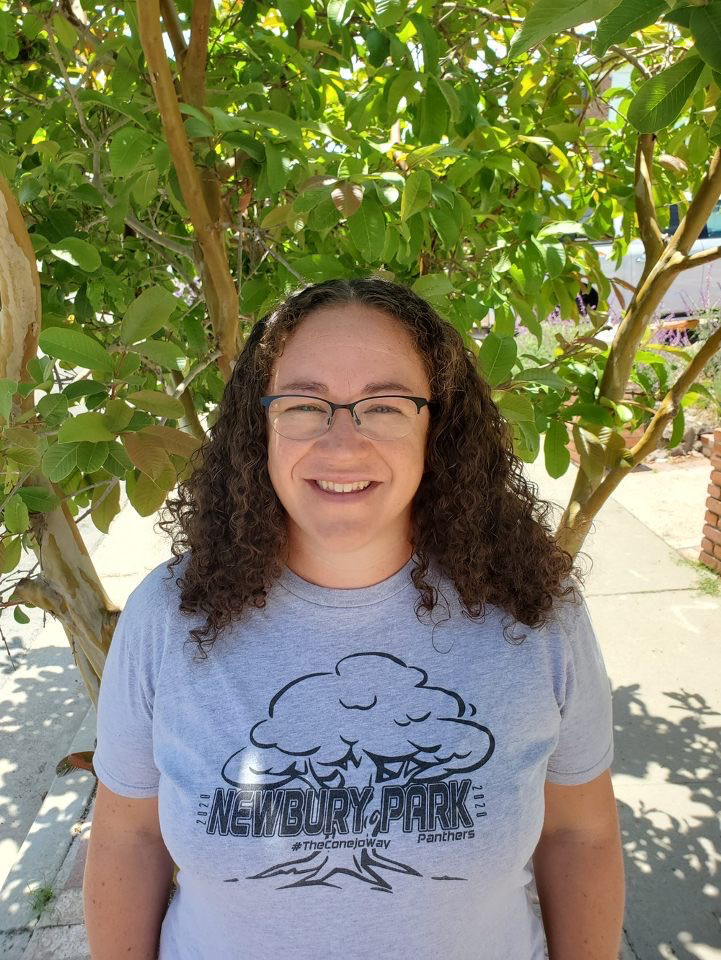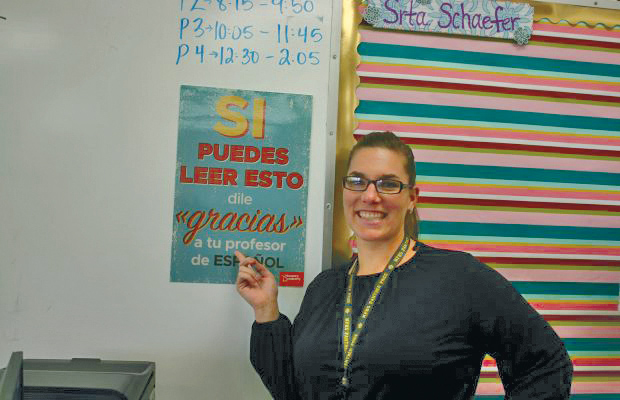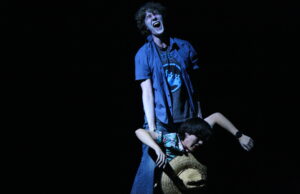Teachers innovate online learning

The implementation of distance learning has shaken up education systems across the globe, as teachers are forced to adapt their classrooms to be completely online, needing to find replacements for traditional, in-school activities. Despite the adversity, teachers are rising up to the occasion in many ways and are not only there to continue diligently teaching, but to provide support for their students as well.

Carly Adams, Jill Magnante and Heidi Koenig (from left to right) take a selfie wearing masks. Even in difficult circumstances, Magnante thinks that practicing gratitude is always important. “It doesn’t make them go away. You just get through it differently,” Magnante said. Jill Magnante/With Permission
Student Outreach
One of the most daunting tasks that teachers have had to undertake is adapting the classroom into an accessible format for all students. Marissa Schaefer, Spanish and English language development teacher, expressed challenges with student outreach, saying “unfortunately, even with, offers of free internet and wireless hotspots … which is absolutely fantastic, there’s still a component of figuring out how it works, [and] getting it set up.”
A major cause of disconnect between teachers and students is a gap in access to technology. “I don’t have an iPad and I’m not familiar with them,” Schaefer said. “So there is sometimes a disconnect of [giving] them the instructions they need to support them based on what they have in front of them.”
The lack of physical interaction with their students has been hard for many teachers. “There was a time when I received the news that we were not going to go physically back [to school] that I cried because it just hits you. You knew it, you knew it was coming. But then when you’re like, I’m not going to see my students and I’m not going to get to have those memories,” Schaefer said.

The Conejo Way – Megan O’Weger, biology and English teacher, reps a Conejo Way T-shirt. Megan O’Weger/With Permission
Unique Challenges/Innovation
Each and every class has a unique struggle when it begins transitioning into an online format, particularly classes that regularly involve hands on activities, or those that require frequent testing of pronunciation.
Elizabeth Burnett, culinary arts teacher, has had the task of teaching a cooking class online. “I don’t expect any of [my students] to cook at home with everything going on with COVID, it’s very hard to get groceries or particular items or even just [be] able to cook. So far that aspect of the class has been very difficult,” she said.
Katie O’Neill, chemistry teacher, has been forced to make do with remote labs in order to keep students on track with the curriculum. When there are no good online replacements, O’Neill has had to be creative, such as with the alkaline metals lab for her IB chemistry class. “Alkaline metals are fairly reactive with water, they produce a whole lot of smoke and stuff like that and can catch on fire if you use a big enough amount…I couldn’t find anything on it online so we just decided to film me going through the lab itself,” O’Neill said.
Teachers decided to launch a virtual math and science tutoring center for students who seek help. Although only a few students have requested tutoring, O’Neill believes that the center is still a good way to keep in touch with her students every Friday. “These are all your top-notch kids [and] it’s really just nice to kind of see them… it’s still a good hour for us to spend together,” O’Neill said.

Gracias – Marissa Schaefer poses next to a poster in her Spanish class. Teachers have had to completely switch to distance learning, making empty classrooms a new reality. Megan Vliestra/Prowler
Reflection
Although school is closed, quarantine has been a learning experience for students and teachers alike. While staying isolated, teachers have been able to reflect on the importance and impact of school.
Jill Magnante, English teacher, tries to maintain a positive outlook on the situation.“I always tried to practice gratitude, and have found in some really dark places in my life, that practicing gratitude helps me to keep the right attitude and to endure really difficult circumstances,” Magnante said.
Despite the personal challenges that they may face, many teachers feel the need to stay strong for their students and community. “We’ve had several tragedies to have to deal with in the past few years between the fire and the Borderline shooting and the death of a colleague… But we also have to put on a brave face for our students because they’re looking to us for how to respond and how to adapt,” Schaefer said.
With stay-at-home orders, teachers have been missing the feeling of community that many people took for granted before. “I miss interacting with my colleagues, and there’s parts of it that are easier sometimes with virtual learning, but not necessarily in a good way… it’s really sad to be disconnected from the community that our school built around you guys and around the whole team,” Schaefer said.
Magnante feels the same way, saying that school has reminded her of how important building close relationships between students and teachers are. “School is so much more than standards or skills. Those are important, but those skills and standards become so much easier to learn when you have strong relationships… In my zoom sessions, I constantly thank my kids for being present, and I constantly remind them that I’m here for them, because it’s never been more apparent how important that is,” Magnante said.

